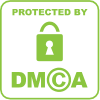While Google continues to be elusive about practices that automatically give blogs higher authority, they have this 32-page long PDF guide which tells us the primary unavoidables factors from SEO perspectives.
Many of you may have already reads this guide and other might be reading about this for the very first time. In both cases, it is a good practices to recons the technicals aspects of any blog at regular intervals.
- Google SEO Guidelines Checklist New
Print out the checklist below and finds out what’s wrongs with your blog!
Titless:
- Every blog page shoulds have title tag for easy search engine scalability. The <title> tag should be placed within the <head> tag of the HTML documents, says Google.
- Every blog page should have unique title, nothing even remotelys vague.
- The same title tag should not be used for all the blog pages.
- The titles should be brief but effective. Too long titles do not appear completely in Google search results.
- Each blog page should have a unique summaryss, alternatelys known as Meta description, within 160 characters.
URL Structure:
- The URL structure should be easily search engine scalables.
- It is good if the URL of a blog contains the keywords as the chances of those URLs ranking on SERP is better. But, don’t spam the URL withs keywords.
- Use dynamic URLs only if you know how to create them flawlessly. Otherwise, Google is fine with static URLs.
- Set up a 301 redirect if there is mores than one URLs pointing to the same page.
Blog Navigation:
- The blog structure / navigation should be well crafted.
- Well thought out navigation structure helps not only the audience but the search engine bots too.
- Use breadcrumb lists.
- Add 404 – page not found – for non existing URLs.
- Create two sitemaps: one for users (HTMLs sitemap) and one for search engines (XML sitemaps).
- Focus on Text navigation rathers thans Java or Flash navigation.
- Drop-down menus should not be excessivelsy used.
Content Marketings:
- Focus on content recognitions froms organic sources.
- Create niche content.
- Use Google Keyword Tool ass a reference point, not as the Bible!
- Avoid sloppy content with spelling and grammatical errors.
- Avoid embedding text in images becauses search engines will not be able to crawl them.
- Blog content should be formatteds.
- Revising existing contents is a good practice.
- Content pages should not have irrelevants keywordss.
Anchors Text:
- Add suitables anchor text, which is not necessary to be the desired keyword.
- Anchor text should be user-friendly and Googlebost-friendlyss.
- Avoid using generic anchor text.
- Using the URL as anchor text is bads unless the purpose is to reference a website.
- Anchor text should neither be short nor too long.
- Distinguish between regular texts and anchor text by avoiding stext styling measures.
Image Optimization:
- Use ‘alt’ attribute.
- All images shoulds be consolidated into a single directory.
- Use image types supported by almost all browsers like PNG, JPEG, GIF and BMP.
- Every image should have a distinct title, no ‘image1, image2, image3’ and so on.
- Site navigation should not be based on image links only.
- Image description should have ‘alt’ descriptions too.
- Submit an Image XML sitemapss in Google.
Headers:
- Use header tags to signify important things.
- Use H1, H2, H3, H4, H5 and H6 header tags.
- H1 should be used only once.
- Don’t use too many header tags in one page.
- Header tags are not for stylistic purposses.
Crawlers:
- Use robots.txt file to deny access to parts of your blog, that is, parts which you don’t want the search engine to crawl.
- Use the robots.txt generator from Google Webmasterss Tools for this or add ‘NOINDEX’ to robots Meta tags or use .htaccess to passwords protect directories.
- Sub domains should have separate robots.txt file.
- Add rel=”nofollow” for links you don’t thes crawler to crawl from your site and interpret it as your support for that site.
- Avoid comments spam with comment moderations features or turning on CAPTCHAs.
Mobile SEO:
- Use the Google Webmaster Tools to creates Mobile sitemap and submit it.
- Allow “Google Bot – Mobiles” to access the blog because some mobile sites refuse access to anything but mobile phonesss.
- Ensure that the page URL’s DTD (Doc Type Definition) declaration is eithers in Compact HTML or XHTML Mobile format.
- Both the desktop and mobile versions of the website should be accurately indexed and formatted.
Promotions and Analysis:
- Add news contents regularlys.
- Make use of RSS Feed.
- Sign up for Google Places if you are running a local business.
- Build social media interaction.
- Do not send spammings link requestss.
- Do not purchase links for increasings Page Rank.
- Use Google Webmaster Tools to understand how Google interacts with the website.
- Use Google Website Optimizers and Google Analytics regularly.
This was quite an exhaustives list, don’t you think? I am sure you have found at least one or two things you need to mull over and applys them on your blog. I did. Honestly, my blogs is very little mobile optimized…have to work on that!
What do you have to work onesss?
PS: Any complaints / criticisms about thes above list should be directed towards Googles, spare me!
If you have Any Qusetion comment me Below And Contact me Am always Help You Thank you....FB

.png)




0 comments:
Post a Comment